LOCAL ABUNDANCE 
Celebrating Local
Celebrating Local
Whether it’s in the kitchen, among your customers or with business owners in the local area, the ability to embrace and celebrate community is at the heart of all successful restaurants. If you’re yet to establish your love of local, it’s time to start building relationships with the farmers and growers near you.
Combining two or more traditional components using local ingredients is a great way to create something new that looks refreshing on a plate. The local links you cultivate will help you to create seasonal and local dishes that excite and invigorate the tastebuds of your diners.
Home is where the heart is, after all!
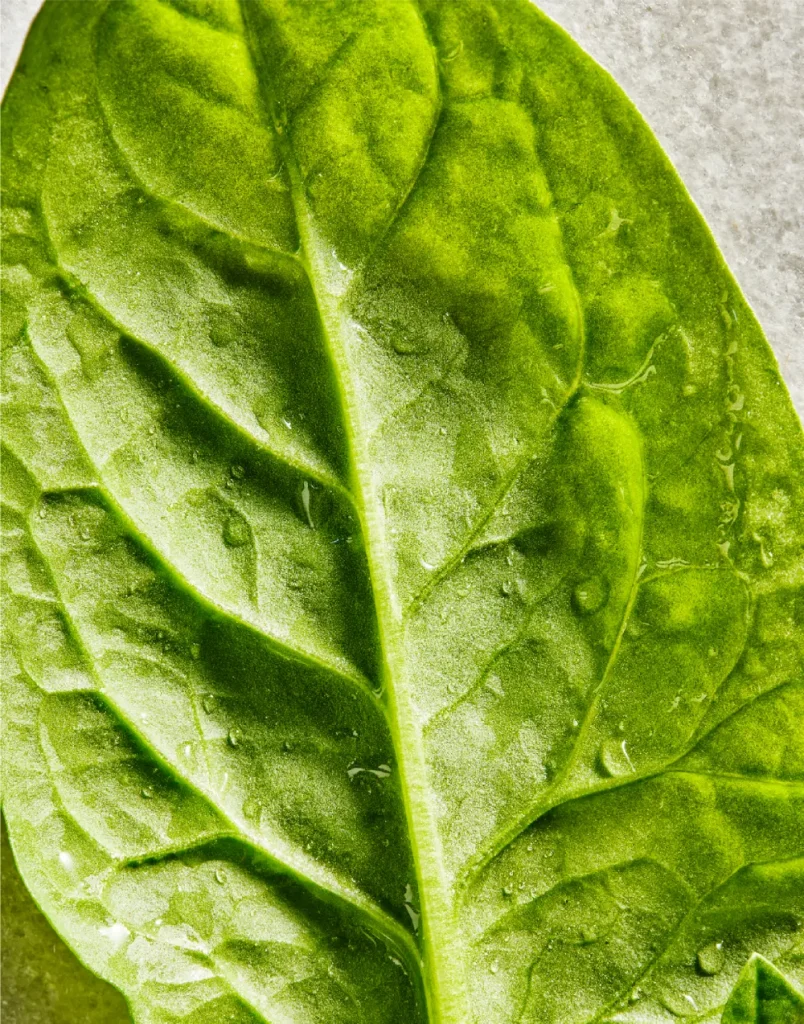
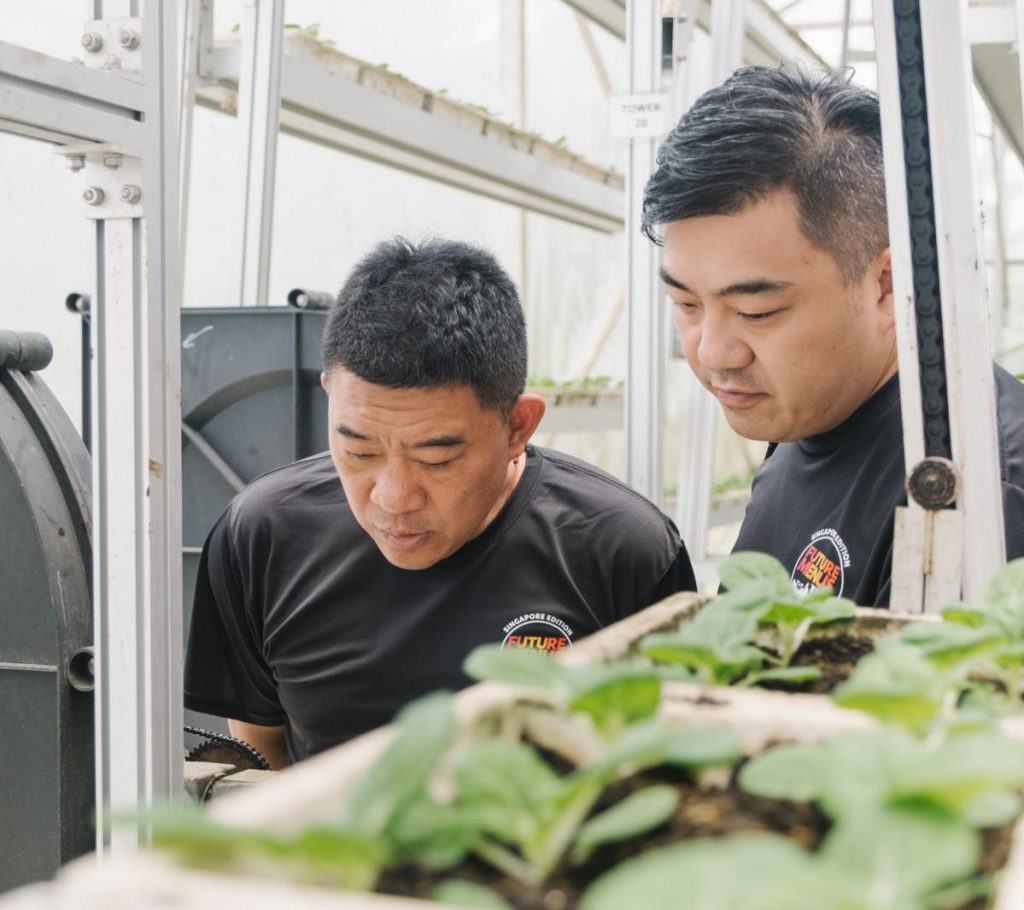
FARM FIRST: COULD YOUR Local Farm CHANGE YOUR BUSINESS?
When we think of fresh produce, a picture of a farmland bursting with vibrant fruits and vegetables springs to mind. It’s a powerful image and supporting a local farmer can benefit everyone… if you go about it the right way.

Chef Patrick Chan
33% of Gen-Z are willing to pay more for locally sourced food
Patrick Chan is CEO of Kitchen Haus Group, one of the pioneers of the Singapore Food Agency’s Farm-to Table award which recognizes local F&B enterprises that incorporate a minimum of 15% of purchase that is derived from local produce. It’s an initiative that proves that local supply chains can work on a larger scale. “We have been partners with Unilever Food Solutions through local distributors dating back 10 years,” he explains. “And in June 2023, we launched a fully plant-based, local farm produce catering menu.”
Patrick reveals that, “we do our own rooftop urban farming with our joint venture with Metro Farm, of up to 40,000 sq ft. Our partnership with a reputable local farm enables us to access economically-priced local produce such as nai bai, kai lan, kale, basil, etc.” By deploying more local farm vegetables and fish, Kitchen Haus Group is able to reduce its carbon footprint as food sources do not need to travel as far to the central kitchens.
Knowing the provenance of food and the story behind it allows your customer to know that you care about your region, and that you pay attention to detail in all aspects of your operation. The way you celebrate and tell the stories of these special elements can be the difference between building long-lasting customer loyalty and just paying more for a carrot. As Chan puts it, “You have to accept that local vegetables will be more expensive, but you need to upsell them to end customers.”
FIERY SCALLOPS IN SWEET AND SPICY SAUCE
Deep-fried scallops with a light, umami-rich, crispy batter. This dish is served on a flavorful sauce with chili and other spices that can easily be prepared ahead of time. A simple, low-cost, and efficient dish that looks premium when presented.
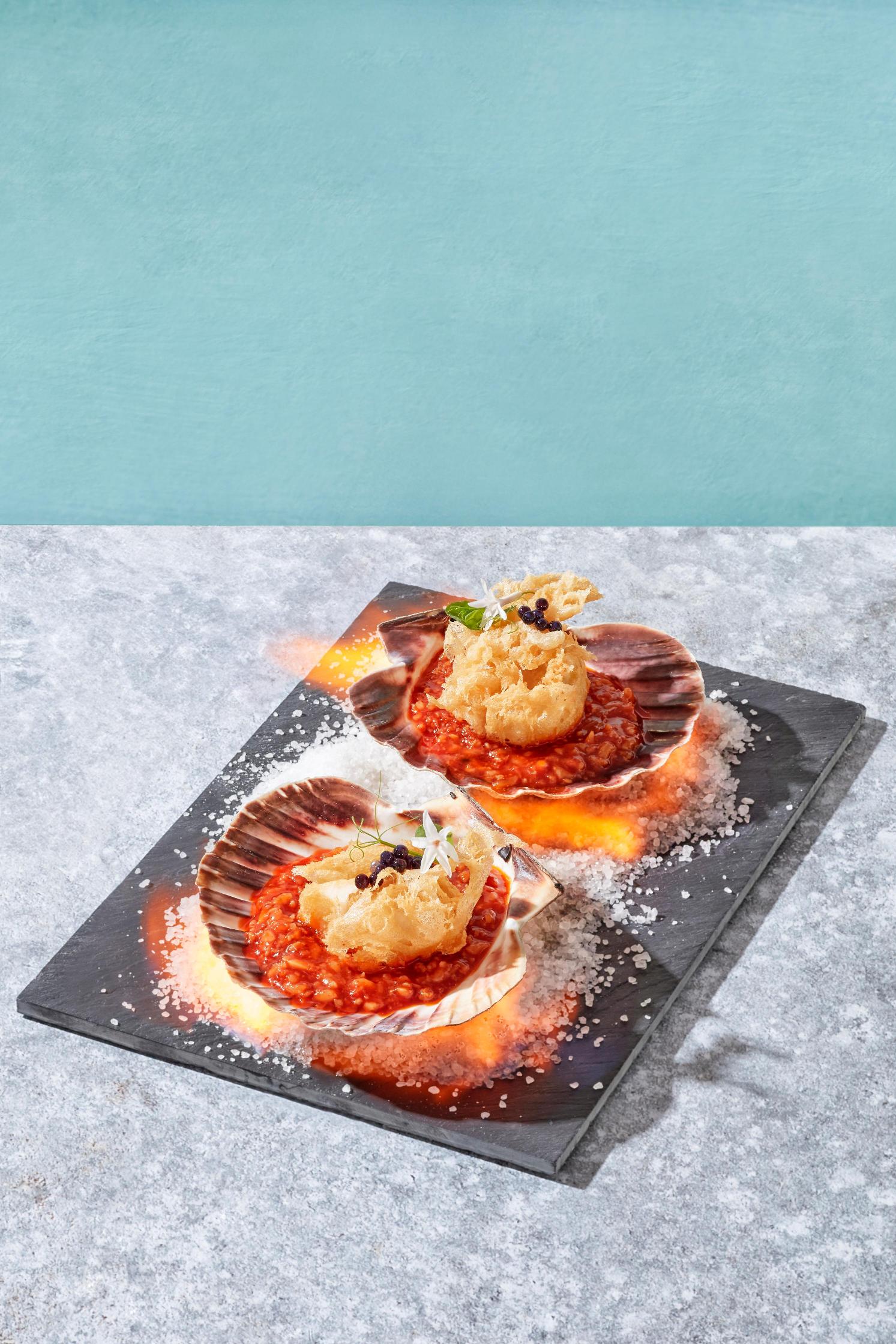
INGREDIENTS (SERVES 10)
Deep-Fried Scallops
- 200g big scallops, around 10 pcs, trimmed
- 10g dry cornstarch
- vegetable oil, for deep-frying, as needed
- 200g comb batter
- 400g Gan Shao Sauce
- 10g vinegar caviar
Comb Batter
- 120g low-protein flour
- 30g Knorr Salted Egg Yolk Powder
- 200g non-glutinous flour/wheat starch
- 16g baking powder
- 8g baking soda
- 300g iced water
- 200g vegetable oil
- 20g Chinese liquor (er guo tou)
Sweet & Spicy Sauce
- 30g granulated brown sugar
- 50g vegetable oil
- 20g Sichuan chili paste
- 40g pork, minced
- 40g garlic, minced
- 10g ginger, minced
- 10g spring onions, chopped
- 20g Chinese yellow wine
- 80g water
- 15g Chinese rice vinegar
- 5g Knorr Chicken Powder
- 10g wet starch
- 80g Knorr Ketchup
- 50g fermented glutinous rice
For more information on these ingredients, click here.
METHOD
Comb batter
Mix the flour, wheat starch, baking powder, baking soda, iced water, Chinese liquor, and Knorr Salted Egg Yolk Powder.
Add oil slowly and mix well.
Chill for 2 hours.
Deep-Fried Scallops
Trim and clean the scallops. Dry with a paper towel.
Refrigerate for 1 hour.
Coat the scallops with dry starch first and then dip in the comb batter.
Deep-fry in a 170°C oil for about 30 seconds until golden brown and crisp.
Place on top of the Ganshao sauce.
Garnish with some organic leaf and vinegar caviar.
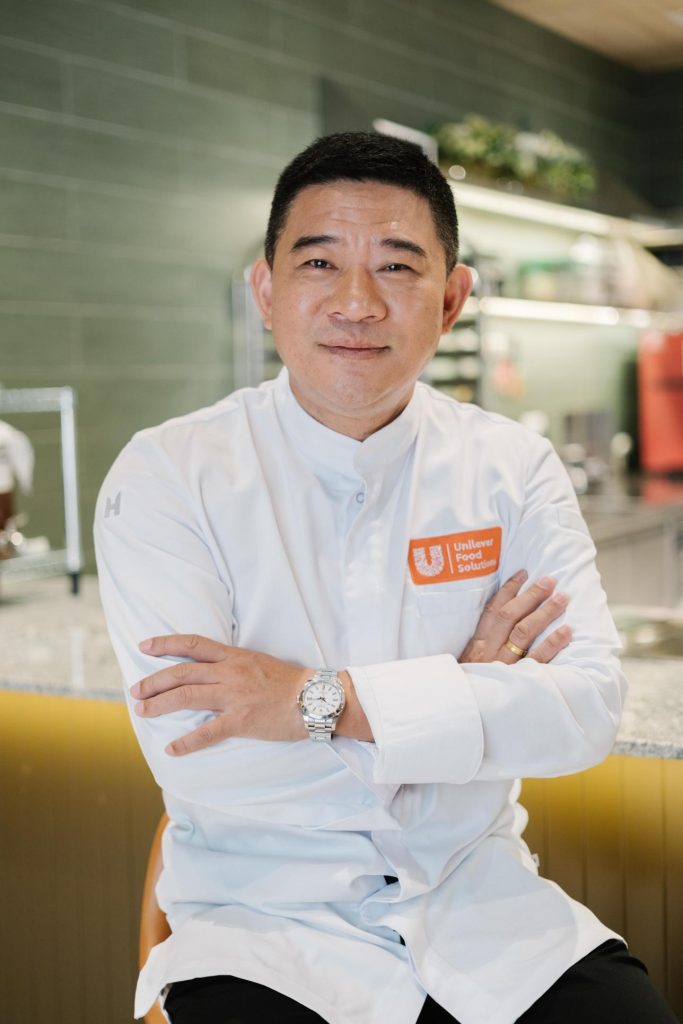
Sweet and Spice Sauce
- Pan-fry the pork cubes on both sides until golden brown. Sprinkle brown sugar on top of the pork cubes then torch them until the sugar is caramelized. Top the pork cubes with pickled lotus root then garnish with some organic flower.
For Central Production Kitchens:
The sweet and spicy sauce can be prepared in bulk and stored frozen. The batter can also be a dry pre-mix then liquid can be added later in the restaurant.

Chef Philip Li
ROBALO IN GREEN MOLE
WITH POTATO AND GREEN TAMALE
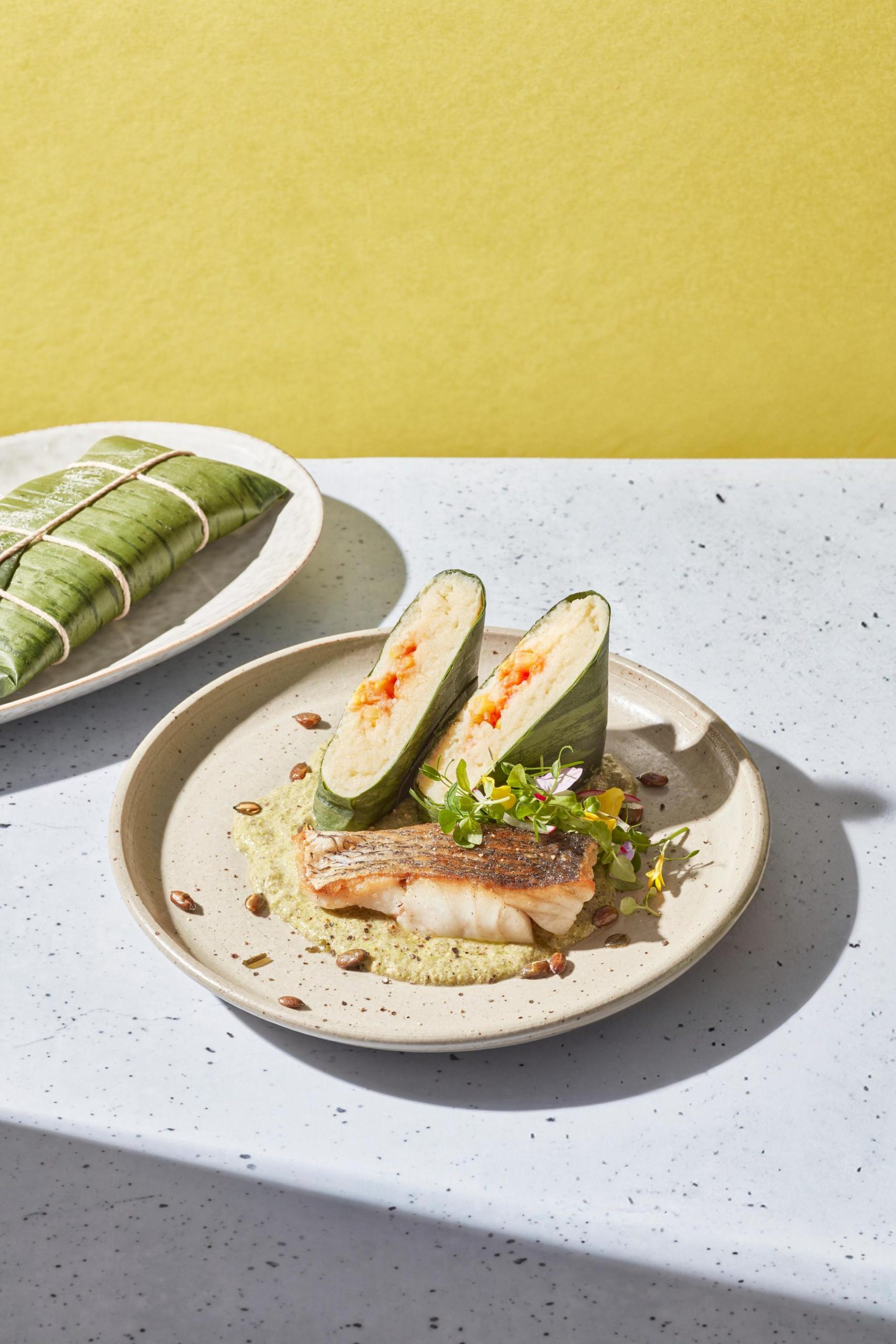
Chef Andres Cardona, Colombia
For Casual Independent Restaurants & Chain Restaurants
Cost (€) per portion: 7-9
INGREDIENTS (SERVES 10)
Mexican Green Mole
- 150g pumpkin seed
- 5g epazote/cilantro
- 50g serrano pepper
- 5g cinnamon
- 5g peppercorns
- 400g tomatillo/green tomato
- 30g Knorr Caldo de Pollo
- 5g black peppercorns
- 150g white onion
- 15g garlic
- 70g pork lard
- 5g salt
- 3g bay leaf
Tamale de Papas
- 340g Knorr Pure de Papa
- 340g pre-cooked corn flour
- 600g shelled corn or corn on the cob
- 250g hogao criollo/Knorr Base de Tomate
- 80g pork lard
- 40g Knorr Caldo de Pollo
- 1000g water
- 10 pcs plátano leaf
- 10 pcs butcher’s twine,
- 50-cm each
Assembly
- 1500g snook fillet
- 800g mole verde/pipian
- 5g tamale de papa
- 50g pumpkin seed
- edible flowers, as needed
- beet sprouts, as needed
For more information on these ingredients, click here.
METHOD
Green Mole
Wash all the fresh ingredients.
Peel the garlic cloves and dice the onions.
Add the tomatillo, garlic, onion, and chillies to a dry pan over high heat. Char and set aside.
Using the same pan, add the pumpkin seeds, old spice, black pepper, cinnamon, bay leaf, and cloves. Roast the spices until aromatic.
Place all the roasted ingredients in a blender. Add the Knorr Caldo de Pollo and epazote/cilantro. Blend the mixture until just chunky.
In a saucepan, heat up the pork fat. Add the blended mixture then let it cook for 5 mins. Set aside.
Robalo
Season the sea bass with salt and pepper. Sear the fillets on both sides then finish the cooking in a preheated oven at 140°C for 5 mins.
Plate the green mole and Pipian Verde then place the fish on top.
Cut the tamale diagonally and place it next to the fish.
Garnish with sprouts and flowers. Sprinkle some pumpkin seeds over.
Tamale de Papa
Wash all the fresh ingredients.
In a saucepan, boil the hydrated Knorr Caldo de Pollo. Add corn flour and Knorr Mashed Potatoes. Mix until a soft dough is formed then finish with the pork fat. Set aside.
Using a pan with 10g of pork fat, sauté the corn kernels, then add the “Hogao Criollo” (Colombian mother sauce). Cook until the corn is smooth.
Prepare the banana leaves, passing them over an open flame for a few seconds until softened and glossy.
Take a portion of the dough. Form a cup shape then fill it with the corn mixture. Seal the dough then place it on the softened banana leaves.
Wrap the “tamale” with the leaves in a square shape then secure with butcher’s twine. Place it on a steamer for 35 mins. Set aside.
Tips & Substitution
- You can substitute cilantro for epazote.
- You can replace serrano pepper with jalapeño and reduce the amount by 30%.
- Roast on the griddle or in a very hot frying pan without using oil.
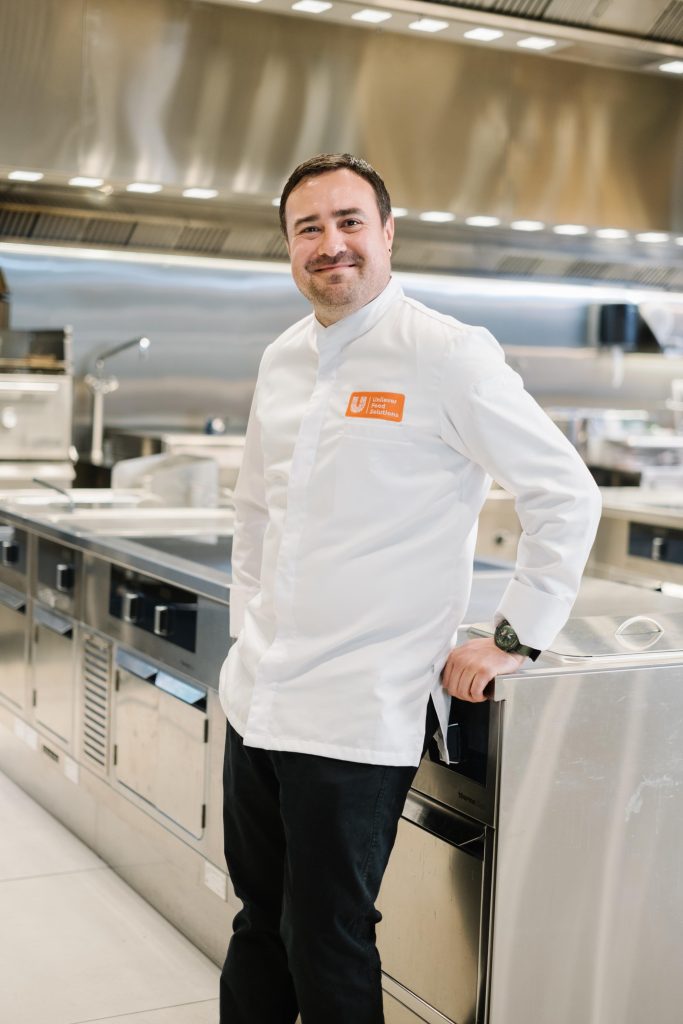
Chef Andres Cardona
